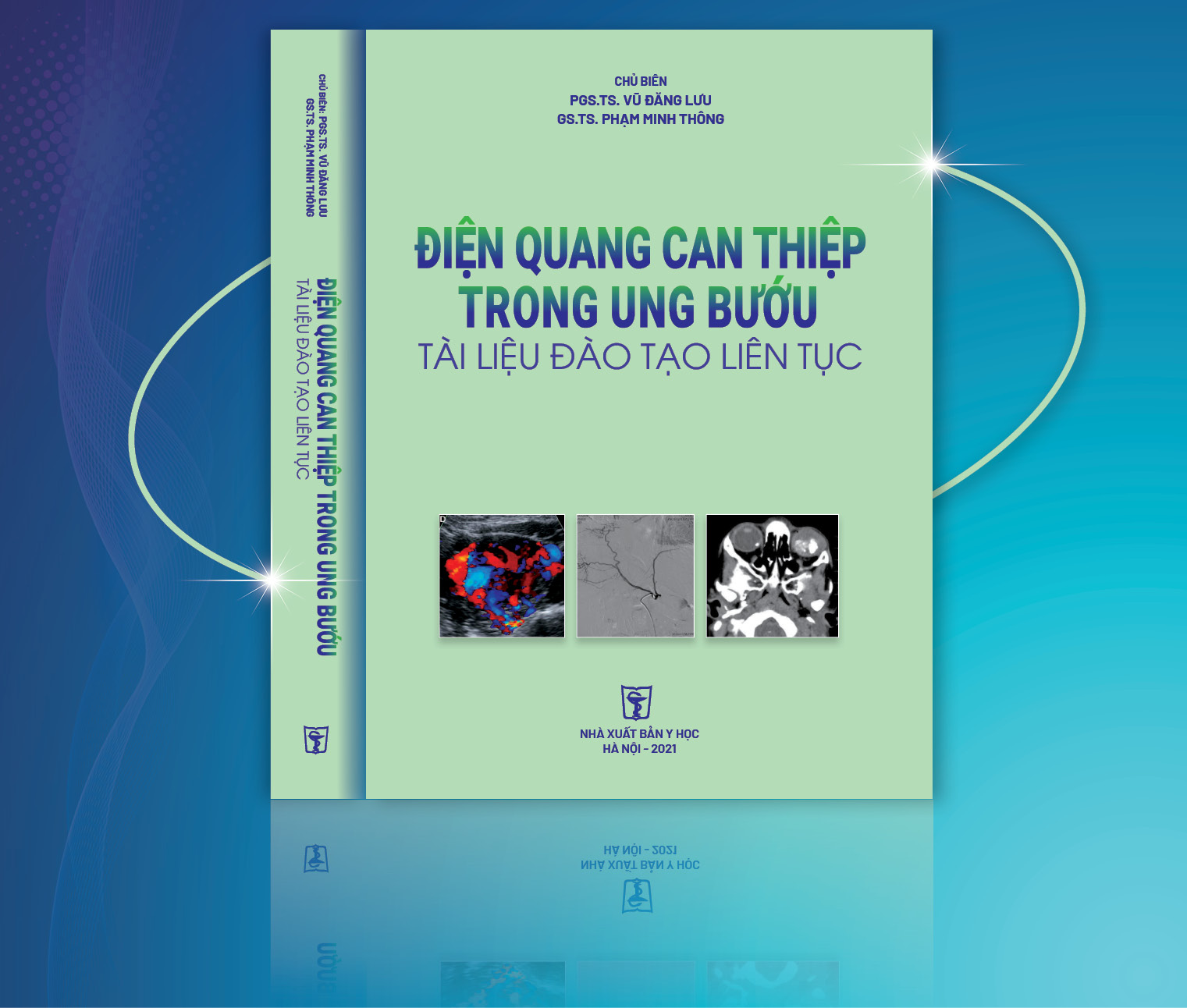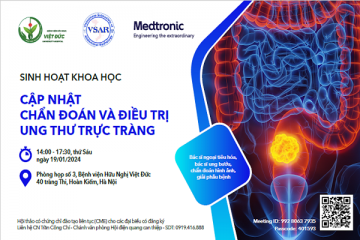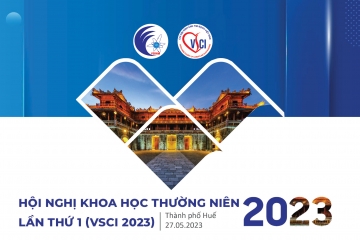
So sánh vai trò cộng hưởng từ "Khuếch tán theo hướng" và "Dán nhãn spin động mạch" trong phân độ mô học u sao bào
06/05/2021 17:42:48 | 0 binh luận
SUMMARY Objectives: The purpose of this study was to determine the value of DTI and ASL in preoperative predicting the histological grade of astrocytomas. Methods: Retrospective study with 29 patients in Choray Hospital, in 01/2017-12/2019, with histological verified astrocytomas. DTI, ASL were preoperatively performed. Results: The mean age # 42.48 years. The ratio of men/women is 0.93/1. The FA, CBF, rCBF values of LGA were significantly lower than those of HGA (p < 0.05). With a threshold of FA of 0.224, a threshold of rCBF of 3.06 ml/100g/minute, DTI and ASL has the same sensitivity, specificity, PPV, NVP, accuracy of 76.2%, 87.5%, 94.1%, 58.3%, 79.3%. AUC of DTI is 75% and AUC of ASL is 85%. Conclusion: FA and CBF, rCBF values can distinguish between high grade and low grade astrocytomas. Key words: MR diffusion tensor imaging, arterial spin labeling, fractional anisotrophy (FA), cerebral blood flow (CBF), astrocytomas, histological grade.

Nghiên cứu hiệu quả điều trị bệnh đông cứng khớp vai bằng phương pháp tiêm nong khớp vai dưới hướng dẫn của DSA
06/05/2021 15:00:46 | 0 binh luận
SUMMARY Objective : The objective was to explore the efectiveness of fluoroscopic-guided hydrodilatation of glenohumeral joint for the treatment of frozen shoulder Materials and Methods: The prospective study 38 shoulders with primary adhesive capsulitis were treated with hydrodilatation between August 2017 and July 2020 in Radiology Centre- Bach Mai Hospital. The patient were hydrodilatation with corticosteroid injection performed via an anterior approach under fluoroscopy. Patients were followed up at baseline and at 2 and 4 weeks postintervention with Shoulder Pain and Disability Index (SPADI) scores, VAS scores, and ROM in abduction, forward flexion, external rotation. Results: A total of 38 consecutive patients with frozen shoulder underwent a distension arthrogram. There were 20 females and 18 males with a mean age of 59,6 (range : 43-91). The mean visual analogue pain score pre-distension was 6,1, two weeks and four weeks post-distension the mean score had significantly improved to 4,1 and 2,9. Mean baseline SPADI score for the patients pre-distension was 65, two weeks and four weeks post-distension the mean score had significantly improved to 45 and 32. Flexion improved from a mean of 76 degrees pre-distension with 106 degrees at 2 weeks and with 131 degrees at 4 weeks. Abduction improved from a mean of 75 degrees pre-distension with 107 degrees at 2 weeks and with 133 degrees at 4 weeks. External rotation improved from 20 degrees pre-distension with 36 degrees at 2 weeks and 53 degrees at 4 weeks. The patients receiving hydrodilatation demonstrated significant improvement in VAS scores and ROM in flexion, abduction, and external rotation at 8 weeks. No patient suffered any significant complication from hydrodilatation and, in particular, there were no intra-articular infections. Conclusion: Review of the literature and the results presented here indicate that arthrographic capsular distension progressing using fluid containing cortisone is a fairly effective treatment for adhesive capsulitis. Distension arthrography seems to he a promising treatment for adhesive capsulitis. Arthrographic shoulder capsule distension was performed through an anterior-lateral approach under fluoroscopic guidance is accurate, reliable and minimally invasive. Keyword: Hydrodilatation, adhesive capsulitis

Nghiên cứu vai trò của chụp cắt lớp vi tính 256 dãy trong đánh giá chức năng thất trái trên bệnh nhân có chỉ định chụp MSCT mạch vành
06/05/2021 14:54:54 | 0 binh luận
SUMMARY Objective: To compare DSCT using 256-slice coronary CT angiography (SOMATOMA Definition FLASH, Siemens Medical Solution, Germany) with echocardiography for the determination of left ventrical dimentions, left ventricular ejection fraction (LVEF), end-diastolic volume (EDV), end-systolic volume (ESV), regional wall motion as well as assessing coronary artery image quality and patient radiation dose. Materials and Methods: One-hundred twelve patients were referred for DSCT for evaluation of coronary artery and underwent DSCT and transthoracal echocardiography within 1 week. LV dimentions, EF, EDV and ESV were determined for both DSCT and echocardiography, and the correlation coefficients were assessed. Measurements of dimensions were obtained in standardized planes in end-systole and end-diastole and included the septal and posterior wall thickness, and inner diameter of the left ventricle. Global left ventricular (LV) functional parameters [end-systolic volume (ESV), end-diastolic volume (EDV), ejection fraction] were computed using automated software. ESV, EDV were normalized to the body-surface-area (BSA). Correlation between DSCT and echocardiography was tested through linear regression and Bland- Altman analysis. Regional wall motion is collected by visual (1, normal, 2, hypokinesia, 3, dysphagia or akinesia). Coronary artery segment subjective image quality (1, excellent; 4, poor) and radiation dose were recorded. Results: A direct comparison between 256 slice Dual-Source CT and 2D-echocardiography was performed in 112 patients (43men; 61,26 ± 11,68 mean age years) who were clinically referred for MSCT coronary angiography. LV end-diastolic volumes (LVEDV) and LV endsystolic volumes (LVESV) were determined and the LV ejection fraction (LVEF) was derived. Average LVEF was 66,24± 13,52% (range 23-85%) as determined on DSCT, compared with 65,72±11,31% (range 25-84%) on 2D echocardiography. Evaluation of LVEF by linear regression analysis showed a good correlation between DSCT and 2D-echocardiography (r= 0,715; P < .001). Good correlations between DSCT and 2D-echocardiography were demonstrated for the assessment of LVEDV (r=0,732 ; P < .001) and LVESV (r= 0,841; P < .001). At Bland-Altman analysis, mean differences (±SD) of 1,78 ± 24,10 mL (p <0 .05) and 0,766 ± 13,7 mL (p < 0.05) were observed between DSCT and 2D-echocardiography for LVEDV and LVESV, respectively. LVEF was slightly overestimated with DSCT (0.52 ± 9,59%; p < 0.05). Resultly, the LVEFs calculated by DSCT and echocardiography were not statistically different. However, LVEF, EDV and ESV from MDCT were statistically higher than those from echocardiography (p < 0.05).The average image quality score of the coronary artery segment was 1,79. The mean patient radiation dose was 3,78 ±1,88 mSv. Conclusion: In conclusion, the use of 256-slice DSCT can provide comparable results to those using 2D-TTE for LV funtion include EF, EDV, ESV and regional wall motion assessment in a heterogeneous population. Keywords: DSCT; Coronary Artery Disease; Left ventricular function; Echocardiography; Radiation

Đánh giá chất lượng cuộc sống của bệnh nhân sau điều trị nút mạch u cơ trơn tử cung theo bộ câu hỏi UFS - QOL
06/05/2021 15:46:53 | 0 binh luận
SUMMARY Purpose: The responsiveness of the uterine fibroid symptom after Uterine artery embolization for the treatment of Uterine fibroids with healthrelated quality of life questionnaire (UFS-QOL). Method and objective: Follow- up study from January 2019 to July 2020, we treated 36 patients who manifest symptom cliniclly (mean 38,08± 6.26 year, range 24-59 years). quality of life test before and after treatment for 3 months and 6 months. The find the relationship between treatment outcomes and quality of life. Results: A total of 36 patients with 43 tumors received the intervention, a technical success rate of 100%. Clinically, after 6 months, 80% of patients stopped menorrhagia, 85,7% of patients had stopped abdominal pain, the mean tumor volume decreased after 3 months and% after 6 months (p <0.05). Quality of life score improved 42 points after 6 months. Conclusion: Uterine fibroid embolization seems to lead to notable long-term relief of fibroid- associated symptoms. In comparison with the midterm results, long-term outcome shows a clear continuance of improvement in general quality of life. Key words: fibroid, Uterine artery embolization, quality of life

Nghiên cứu đặc điểm hình ảnh siêu âm doppler trước và sau đốt laser nội mạch điều trị suy tĩnh mạch hiển lớn tại Bệnh viện Bạch Mai
06/05/2021 17:35:33 | 0 binh luận
SUMMARY Objective: The study is to evaluate the characteristics ultrasound imaging Doppler before and after the laser incineration of the great saphenous veous insufficiency at Bach Mai Hospital. Object research and methods: Uncontrolled intervention study of 41 shaphenous veins with a diagnosis of venous insufficiency on ultrasound, indicated by 1470 nm wavelength intravascular laser burning at Bach Mai Hospital from October 2017 to 12/2019. Results: Among 41 patient intervention. The rate of bilateral venous insufficiency was not statistically significant with p< 0,05. Before the intervention: the mean diameter of great saphenous vein mid-thigh segment was 6,9±2,0 mm, the time of reflux in the mid-thigh was 2161±969,9 ms ( greater than 0,5s). After intervention: completely blocked after 1 month ( n=41), after 6 month (n=39), and 2 years ( n=26), not completely after 1 years, there í one case, accounting for 2,8% ( n=36). Conclusion: Great shapenous venous insufficiency have average diameter > 5 mm with reflux current time > 0,5 s. After 2 years of laser intervention, the veins were completely blocked with the rate of ≥ 97.2%. Keyword: Great shapenous venous insufficiency, imaging characteristic, Doppler ultrasound.

Tương quan của hình ảnh cộng hưởng từ với triệu chứng lâm sàng của bệnh thoát vị đĩa đệm cột sống thắt lưng
06/05/2021 17:26:04 | 0 binh luận
SUMMARY Abtracts: Retrospective study of patients diagnosed with clinical disc herniation and magnetic resonance and had surgery at the Orthopedic and Spinal Trauma Department, Bach Mai Hospital. Results: 29.5% of patients in this study involved L5 - S1 disc herniation and 45.5% of patients with L4 - L5 disc herniation. Spinal Syndrome, Nerve Root Syndrome and Sensory Disorders are the most common symptoms. Nutritional disorders and sphincter disorders are found in posterior disc herniations and in the graft holes, in the L4-L5 and L5-S1 layers. Magnetic resonance is of high value in the diagnosis of lumbar spinal disc hernias and hernias, in diagnosing hernias, sensitivity from 97.9 %% - 100%, specificity from 98.1% - 100% accuracy from 98.2% - 100%; In the diagnosis of a specific herniation layer, the sensitivity ranges from 95.5% - 100%, the specificity is 90% - 100%, the accuracy is 94.2% - 100%. Conclusion: In our study, correlation in shown between clinical findings and MRI results. The most common clinical symptoms are spinal syndrome and nerve root syndrome. Disc herniation often protrusions, herniated backwards and in the L4-L5 layer. Magnetic resonance is of high value in diagnosing types and layer lumbar spinal disc hernias with accuracy from 94.2%-100%. Key words: Disc degeneration, Disc herniation, Magnetic resonance imaging
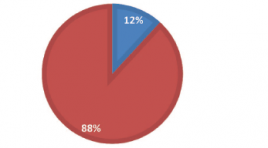
Đặc điểm hình ảnh chụp cắt lớp vi tính 256 dãy đầu thu ở bệnh nhân phình động mạch chủ
06/05/2021 15:25:14 | 0 binh luận
SUMMARY Objective: to describe the imaging characteristics of aortic aneurysm using 256 rows of detectors computed tomography scanner. Subject and Method: cross-sectional descriptive study on 78 patients with aortic aneurysm, who were diagnostised by computed tomography scanner with 256 rows of detectors from March 2019 to the end of February 2020 at Friendship Hospital. Results: 93.6% in male and almost in elderly (> 60 years old). Risk factors were hypertension, diabetes, cerebral artery accidents due to hypertension and increase of blood lipid concentration. The aortic aneurysm with maximum transversal diameter ≤ 5 cm accounted for 79,8 %; The length of aneurysm from 5-10cm accounted for the highest proportion (50%), other groups were equivalent. Fusiform aortic aneurysm accounted for 88%. Abdominal aortic aneurysm had highest proportion (69%). Common iliac artery lesion was 39,3%, however it accounted for 56,9% of abdominal aortic aneurysms and 94,3% of branch injuries. Aortic aneurysms were often accompanied by atherosclerosis and calcification (83%); wall thrombose (89.6%). There were 7.1% of cases accompanied by endothelial dissection. Conclusions: 256 rows of detector CT scanner allows to diagnosis accurately all lesions of aortic aneurysm and plays an important role in diagnosis and monitoring patients suffering from aortic aneurysm. Key words: aortic aneurysm, 256 rows of detector CT scanner
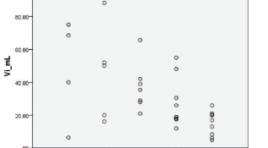
Đặc điểm hình ảnh và vai trò chụp cắt lớp vi tính 128 dãy tưới máu não trong chẩn đoán nhồi máu não cấp do tắc động mạch cảnh trong
06/05/2021 15:43:05 | 0 binh luận
SUMMARY Abstract: For acute ischemic stroke (AIS) patient, assessment of cerebral injury plays a very important role in choosing treatment for better outcome and reduces mortality. CT perfusion (CTP) can assess the infarct area and tissue at risk area. Therefore, CTP has a very important role in the choice of treatment and prognosis for AIS patient. Objective: (1) Image features of 128-slice CT perfusion in diagnosis of ASI. (2) Role of CTP in assessing the extent and prognosis of acute cerebral infarction due to internal carotid artery occlusion. Method: A prospective descriptive cross-sectional study of 35 acute ischemic stroke due to internal carotid artery occlusion patients, had 128-slice CT perfusion, and indicated for mechanical thrombectomy in Bach Mai Radiology Center from April 2019 to June 2020. Results: Mean age of 66.57 ± 11.98, the average baseline NIHSS was 17.23 ± 4.47, 32 patients (91.43%) had early infarcted signs on Noncontrast CT (NCCT). ICA occlusion site: ICA 20%, Tandem 42.9%, ICA Terminus 37.1%. Mean volume of infarct core 34.60 ± 33.34 cm3, and penumbra 102.98 ± 40.07 cm3. Mean relative MTT 252.86 ± 81.49%. Mean CBV infarct core 1.19 ± 0.39 ml / 100g. ASPECTS score and infarct core volume, as well as the rate of post-intervention bleeding with infarct core volume were statistically significant (p <0.05). Conclusion: A 128-slicce CTP of AIS due to ICA occlusion is characterized by: mean infarct core volume is greater than mean infarct core volume of AIS due to anterior circulation large artery occlusion (AC-LAO) in general, although the majority of patients were admitted to the hospital early. From the correlation between infarct core volume and the risk of post-intervention bleeding, it is possible to predict patients with AIS due to ICA have higher rate of post-intervention bleeding than patients with AIS due to AC-LAO in general. Keywords: CT perfusion, acute ischemic stroke, AIS, ICA occlusion
Bạn Đọc Quan tâm
Sự kiện sắp diễn ra
Thông tin đào tạo
- Những cạm bẫy trong CĐHA vú và vai trò của trí tuệ nhân tạo
- Hội thảo trực tuyến "Cắt lớp vi tính đếm Photon: từ lý thuyết tới thực tiễn lâm sàng”
- CHƯƠNG TRÌNH ĐÀO TẠO LIÊN TỤC VỀ HÌNH ẢNH HỌC THẦN KINH: BÀI 3: U não trong trục
- Danh sách học viên đạt chứng chỉ CME khóa học "Cập nhật RSNA 2021: Công nghệ mới trong Kỷ nguyên mới"
- Danh sách học viên đạt chứng chỉ CME khóa học "Đánh giá chức năng thất phải trên siêu âm đánh dấu mô cơ tim"

